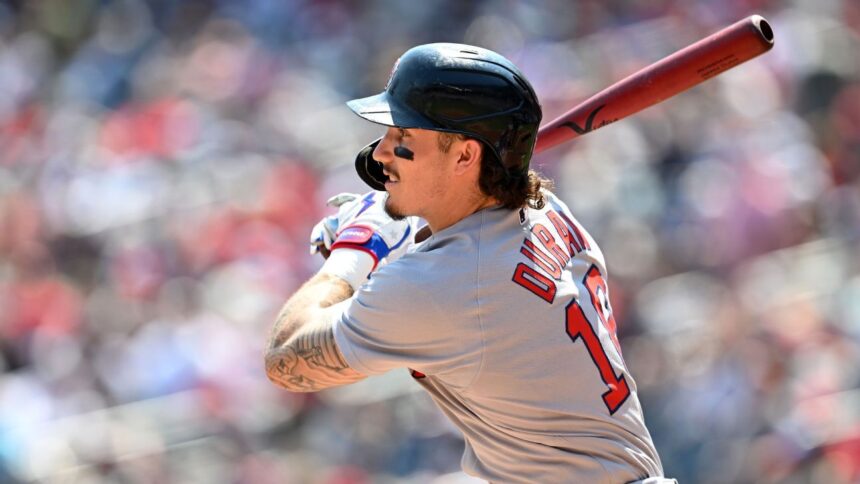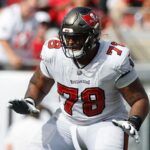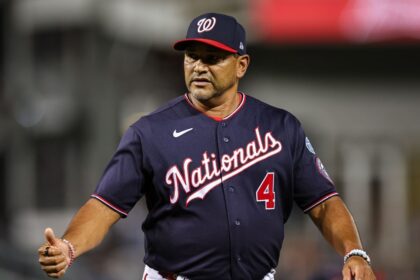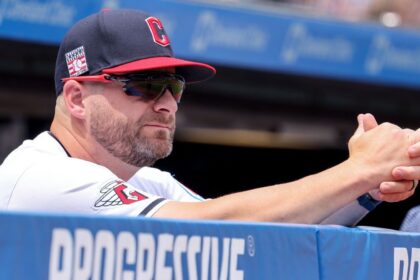The MLB trade season is an annual cycle with well-established mechanics. After the June calls to gauge interest in players, the first offers are presented in mid-July, which usually favor the teams willing to move their players, who, therefore, hold the upper hand.That’s why trades before the All-Star Game are uncommon, and this reminds us that the absence of an agreement now doesn’t mean there can’t be one in the future. There are many factors that influence a deadline (the interest of teams in getting rid of quality players, the willingness of contenders to make a move despite objections from their analytical model, positions in the standings, recent performance, and many others) that linking a team and a player in a possible agreement is a risky task.However, let’s consider this a bit risky. Needs are needs, and even the best baseball teams have them. What would be the best players to cover them? This analysis aims to answer that question.
Below are the 16 MLB teams with winning records. Certainly, a group of teams with a percentage below .500, such as the Texas Rangers, the Kansas City Royals, the Minnesota Twins, and the Arizona Diamondbacks, could enter the conversation despite their slow starts. For now, however, these are the best teams that baseball has to offer, and for each one we find a fit among the available players that makes a lot of sense.
The teams are listed in order of record by league.American League
Detroit Tigers
59-35, first place, AL CentralWeakness: Relief pitchers with strikeout issues.
Best option: David Bednar, Pittsburgh PiratesCade Smith (Cleveland Guardians) and Griffin Jax (Minnesota Twins) are valid options, but the likelihood of Detroit finalizing a deal within the division to obtain a strikeout-generating reliever is minimal. This leaves Bednar, who has recovered from a terrible 2024 to regain his 2021-23 form, when he was among the top five relievers in baseball. With a fastball that exceeds 90 mph, a curveball with a lot of drop, and an effective splitter, Bednar’s arsenal would give the Tigers an option for the ninth inning beyond Will Vest or Tommy Kahnle.Beyond the bullpen, the Tigers don’t need much. They hit very well, with eight of their nine starters having slugging percentages of .415 or better. Manager AJ Hinch’s constant modifications (the lineup Detroit has used the most this year is four) not only work, but are an identity that the team embraces.And as much as the Tigers could use capital from their tremendous farm system to add to this team, they don’t necessarily need it. This is the second year of a window that is sure to last. Securing Bednar’s services for two playoff runs is the kind of incremental step needed to capitalize on a down American League.
Houston Astros
55-38, first place, AL WestWeakness: Starting pitching and left-handed batting.
Best option: Seth Lugo, Kansas City RoyalsThe Astros lost Alex Bregman to free agency, traded Kyle Tucker to the Chicago Cubs, have spent most of the season without Yordan Alvarez, their best hitter, and currently have a rotation that includes rookies aged 26 and 28. There’s no reason for them to be this good. And yet, they are.So, even if the cost is high and affects a farm system that is among the worst in MLB, targeting a pitcher of Lugo’s caliber would give them one of the most ferocious postseason rotations in the game and further solidify the Astros as a force. Lugo’s numbers suggest he is on track to regress, but even if his ERA increases from its current mark of 2.67, Lugo’s nine-pitch combination gives him the flexibility to adjust during the game, a luxury shared by only a handful of starters in the game.Toronto Blue Jays
54-39, first place, American League EastWeakness: Starting pitching
Best option: Mitch Keller, Pittsburgh PiratesAdding Keller solves several problems at once. The 29-year-old is producing the best season of his seven-year career with the Pirates, averaging nearly six innings per start and allowing only seven home runs in 106⅔ innings. The Blue Jays need help in the rotation and, in a deal for Keller, could try to obtain David Bednar, Dennis Santana, or Caleb Ferguson from the Pirates to complement an already good bullpen, boosted by the breakouts of Braydon Fisher and Brendon Little.In addition, Keller is still under contract for three years at a reasonable price of $54.5 million, and with starters Chris Bassitt and Max Scherzer as free agents after this year and Kevin Gausman after the 2026 season, Toronto craves controllable starting pitching in a market that, at least for the moment, doesn’t offer much.Pittsburgh could hold onto Keller and enter 2026 with a pitching staff consisting of Keller, Paul Skenes, Mike Burrows, Bubba Chandler, and Bailey Falter, easily a top-10 rotation, perhaps better, with Hunter Barco not far behind. But the Pirates desperately need bats, and while Toronto’s farm system doesn’t abound in them, the Blue Jays can put together enough to make a deal worthwhile for Pittsburgh.New York Yankees
51-41, second place, AL East (first wild card)Weakness: Third base and pitchingBest option: Eugenio Suárez, Arizona DiamondbacksThis could be Seth Lugo. Or Emmanuel Clase of the Guardians. Or any number of players. The Yankees won’t stop with just one player at this deadline. Despite all their strengths, and there are many, they have too many weaknesses to take half measures.Suárez is an excellent first step. His power is undeniable, a perfect fit in the middle of any lineup. He plays at third base, a black hole for New York this season. The Yankees could make a double deal and get Zac Gallen or Merrill Kelly from Arizona as well. But Suárez is the main target, because even if other options exist at third base, such as Nolan Arenado in St. Louis, Ryan McMahon in Colorado, Ke’Bryan Hayes in Pittsburgh, they are owed a significant amount of money and are under contract for several years. Suárez’s expiring contract would allow the Yankees a trial, and if he thrives in the Bronx, all they would need to get him back is cash.Tampa Bay Rays
50-43, third place, AL East (second wild card)Weakness: Relief pitchingBest option: Griffin Jax, Minnesota TwinsRemember, this is the best option, not necessarily the most likely. Minnesota is notoriously value-conscious in its dealings, and the Twins will put an exceptionally high price on Jax, whom they consider one of the best relievers in baseball, an opinion shared by most teams. With a fastball that sits at 97 mph and a nasty slider, he’s a setup man by name and a closer by stuff, precisely what the Rays, who are without Manuel Rodríguez and Hunter Bigge, could use.The Rays are not typically the type of team that overpays for relievers, even for those with two additional years of club control. If not Jax, they could opt for Brock Stewart (Twins), who also has a great variety of swing-and-miss pitches, and also two more years of team control.Seattle Mariners
48-44, second place, AL West (tied for third wildcard)Weakness: Corner infielderBest option: Josh Naylor, Arizona DiamondbacksAlthough the Mariners are handling the situation with Donovan Solano and Luke Raley at first base, upgrading to Naylor would transform Seattle’s lineup for the better. Whether placing him behind J.P. Crawford to ensure Cal Raleigh gets to the plate with more runners on base, or placing him between Raleigh and Randy Arozarena so that he himself cleans up, Naylor is a high-average, low-strikeout hitter whose good at-bats would help transform a solid Seattle lineup into something more.Pairing him with Eugenio Suárez would plug both holes for Seattle, and the Mariners certainly have the prospect capital to pull off the double. Considering the state of their pitching, a tremendous rotation and a finish with Gabe Speier, Matt Brash and Andrés Muñoz, the Mariners only need a depth reliever to feel comfortable. Improving the lineup is the distinct priority over the next three weeks, and executives expect Seattle to act aggressively.Boston Red Sox
49-45, fourth place, AL East (tied for third wildcard)Weakness: Relief pitchingBest option: Ryan Helsley, St. Louis CardinalsThe Red Sox relievers give up too many walks and don’t strike out enough batters. If you take away Aroldis Chapman, the best reliever in the American League this season, the Red Sox have a mid-level bullpen. Getting Helsley from St. Louis would give Boston possibly the best setup and closer combination in baseball and would go a long way to support a rotation that has been among the best in the game for the past month.Boston has the ingredients to be a very good team in the second half. Alex Bregman will return soon. Roman Anthony has an OPS of almost 1,000 in his last 10 games. Ceddanne Rafaela is one of the best center fielders in baseball. Carlos Narváez is a gem. Wilyer Abreu, Trevor Story, even Abraham Toro, are all contributing. A reliever or two and another starter would make the Red Sox the kind of contender they envisioned being at the start of the season.National League
Los Angeles Dodgers
56-38, first place, NL WestWeakness: Pitching depthBest option: Jhoan Durán, Minnesota TwinsThe Dodgers enter each deadline season looking for a major move, and Duran, at 6-foot-5 and 230 pounds, fits the bill. With a fastball that averages over 100 mph, a splinker that sits at 98, and a curveball to unbalance hitters, Duran is pitching like never before. He hasn’t allowed a home run this season, and his 1.52 ERA is third in MLB for pitchers with at least 40 innings.The selling price will be high. Duran has two more years of team control after this season. The Dodgers have no time to waste taking advantage of Shohei Ohtani’s peak moment, however, assembling a team with standouts in all facets is a reasonable goal. For a group that threatens to approach a major league record for pitchers used in a season (the Dodgers are at 35, the record is 42 by Seattle in 2019), adding another wouldn’t in itself be a determining factor. If that turns out to be Duran, the Dodgers could theoretically present him, Tanner Scott, Kirby Yates, and Alex Vesia to make their bullpen as terrifying as the rest of their team.Chicago Cubs
54-38, first place, NL CentralWeakness: Starting pitching
Best option: Sandy Alcántara, Miami MarlinsIt’s possible that the Alcántara market doesn’t reflect his resume. A former Cy Young Award winner, the 29-year-old has arguably been the worst pitcher in baseball this season, with an ERA of just over 7.22. Some teams, even those that could desperately need starting pitching, see the remaining two years and $38.3 million on Alcántara’s contract as an impediment to any trade, particularly with Marlins general manager Peter Bendix asking for a haul in return.Whether it’s Alcántara or another starter, the Cubs are one good starter away from having one of the best teams in baseball. Their offense is undeniable. Their defense is magnificent. Their bullpen has been a pleasant surprise. Adding a playoff-caliber starter, even if it pushes Chicago past the $241 million luxury tax threshold, would reward a team that has brought excitement back to the north side of Chicago.Philadelphia Phillies
54-39, first place, National League EastWeakness: Bullpen and outfieldBest option: Emmanuel Clase, Cleveland GuardiansAs long as the Phillies aim high, and nobody aims as high as Dave Dombrowski, they might try to get Clase and Steven Kwan from Cleveland. Maybe Andrew Painter is needed. Maybe Aidan Miller. Maybe Justin Crawford. Regardless, the Phillies’ window is closing, and getting both club control (Clase is under contract until 2028 and Kwan until 2027) and cost certainty (Clase is owed $26 million over the next three years and Kwan less than $20 million over two) would make trading high-level prospects significantly more appealing.
If Cleveland ultimately refuses to move Clase, it doesn’t change the imperative: Philadelphia needs to address its weaknesses. This bullpen isn’t equipped to win a playoff series, let alone the World Series. The consequence of poor relief pitching manifested itself in last year’s postseason, when the New York Mets shredded the Phillies’ relievers for 17 runs in 12⅔ innings. No other bullpen allowed more than nine runs in the divisional series. Clase (or Jhoan Durán or any closing reliever, really) is just the beginning. An overhaul on the fly is what this team needs and deserves.
New York Mets
53-39, second place, NL East (first wild card)Weakness: Pitching depthBest option: Zac Gallen, Arizona DiamondbacksThe Mets started 45-24 thanks to the strength of their starting pitching. With an ERA of 2.79 that was almost a quarter of a run better than the second-best rotation, they looked like a giant. Since June 13, their starters’ ERA of 5.61 is worse than all teams in baseball, apart from Washington. And if your starters are compared to the Nationals’, something went wrong.Gallen has looked more like his former self in recent starts, and if his home run rate stabilizes, typically one per nine, it has jumped to 1.6, along with a dangerously low stranded runner rate that is normalizing, he can shake off the 5.15 effectiveness and be a real game changer for the Mets before becoming a free agent after the season. Mets president of baseball operations David Stearns, as a rule, doesn’t spend much on pitching. In this case, however, an investment in Gallen makes too much sense for the Mets not to consider it.Milwaukee Brewers
53-40, second place, NL Central (second wild card)Weakness: Power
Best option: Ryan O’Hearn, Baltimore OriolesWith 88 home runs, the Brewers rank 21st in MLB. And while that hasn’t hindered their production (they’re eighth in runs scored), another big bat could do wonders for their offense. No one will mistake O’Hearn, who will soon turn 32, for Aaron Judge, but he punishes right-handed pitching, and in a lineup without sluggers, O’Hearn could also serve as the strong side of a first base platoon and take at-bats in the outfield and as a designated hitter.Milwaukee’s options are fascinating. The arrival of Jacob Misiorowski has been a resounding success and has only added to the depth of the Brewers’ starting pitching. They could easily move a starter and leverage their deep pool of prospects for O’Hearn. The add-and-subtract maneuver is risky, of course, but the Brewers have strengthened themselves to weather the situation. The Brewers, as they are currently constituted, are solid. Better second halves from Jackson Chourio and Joey Ortiz, continued solid pitching, and the right kind of aggressiveness at the deadline could make them even better.San Francisco Giants
51-43, second place, NL West (third wild card)Weakness: Starting pitching
Best option: Merrill Kelly, Arizona DiamondbacksThe Giants have already made their big move, obtaining the best player who will move this season, designated hitter Rafael Devers, to reinforce their offense. Intradivisional transfers can be difficult, but if Buster Posey has shown anything in his first season as president of baseball operations, it is the willingness to tolerate the kind of deals that would scare his colleagues.Kelly represents a significant upgrade over the Giants’ background rotation options, as Justin Verlander and Hayden Birdsong are sporting ERAs of 6.27 and 5.73, respectively, since June 1. It remains to be seen whether the Giants are real or simply a function of a bullpen whose core of Camilo Doval, Randy Rodriguez, Tyler Rogers, Erik Miller, Spencer Bivens, and Ryan Walker has allowed only 11 home runs in 232⅔ innings. For an organization seeking its first postseason series win in nearly a decade, however, there’s never a moment as urgent as now.







